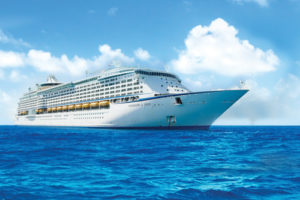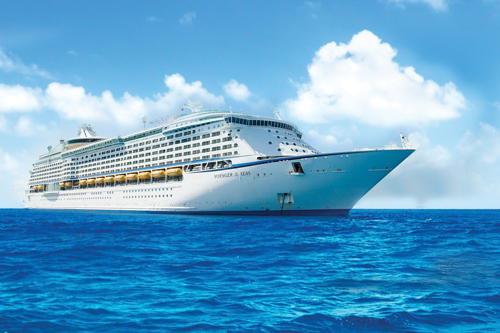New and bigger ports are in the works in East Asia, while the rising middle class in South-east Asia is driving the region’s booming cruise market

South-east Asia’s fast-rising middle class, which has fuelled a boom in budget air travel, is likely to lift the tide for the region’s fledgling cruise industry too.
The most popular routes among South-east Asian cruise travellers, especially among first-time cruisers and travellers with small budgets or limited time, are regional routes plying around Singapore, Malaysia, Thailand and Vietnam.
Tina Cortez, president, TravelPeople Philippines,said: “Asia is really the sweet spot now. A lot of tonnage has been diverted to Asia and most of the cruise brands are now here. There are also more choices of ships and programmes to choose from.”
Wally Cervantes, vice president and general manager of Manila-based Arpan Air, attributes the “surge in demand for Asian cruises” to the affordability of travel driven in part by LCCs, which help to defray costs for cruising too.
Cooper Huang, CEO of Malaysia’s Harmony Tours & Travel, said: “It is easier to sell Asian cruises to the masses because it is more affordable. Malaysians find the food on board Asian cruises more palatable compared to European food.”
Singapore is a popular homeport for first-time cruise travellers from Malaysia, as the city-state’s proximity makes travel affordable. Said Lim Chee Tong, managing director of Kuala Lumpur-based Jebsen Travel & Tours Services: “You can drive, take a bus or fly on a budget airline. It won’t cost as much as taking a flight to North Asia or to Europe to take a cruise.”
Furthermore, the affordability of regional cruises have ensured its popularity among Asian families too.
Alicia Seah, director of marketing communications at Dynasty Travel Singapore, notes that the family market makes up the majority of the bookings, especially during the year-end holiday season. “Hence homeport sailings are more popular, and Royal Caribbean, Princess Cruises and Costa Cruises are own main cruisers for the year end,” she added.
Cruising interest among the Indonesian outbound market has grown significantly in the last couple of years, thanks to the aggressive promotion of the cruise liners and the country’s burgeoning middle class.
While classic shorthaul itineraries like Singapore-Port Klang-Phuket may not be new destinations, it’s the experience on board cruise ships that is novel for Indonesians and attracts them, observed Dharmawan Rahardja, managing director of Genta Tours Jakarta.
Japan, South Korea top for East Asia
Like its South-east Asian counterparts, intra-region cruises are favoured by cruise travellers in East Asia, with industry watchers keeping a close eye on the lucrative and thriving outbound market of China.
Along with Japan’s recent lifting of visa regulations for Chinese tourists on board selected cruise ships that homeport in China, short-term cruise products calling on both Japan and South Korea ports are the most popular in the China market.
“This year’s keyword search volume for Japan/South Korea routes has increased 300 per cent compared to last year,” said Jenna Qian, spokesperson of Qunar.com, which has nearly 1,000 agencies selling cruise products.
According to Qian, South Korea’s Jeju, Seoul and Busan, as well as Japan’s Fukuoka and Nagasaki, are the most preferred ports of call for the “mass” cruise itineraries in China, which typically last four or five nights to accommodate most customers’ limited holiday entitlement.
“Four-night products count for 80 per cent of our sales for Shanghai as homeport,” said Zhang Ji, cruise product director at Tuniu.com. “Shanghai-Jeju-Fukuoka-Shanghai is the best seller at the moment.”
Many cruise lines have changed their South-Korea-only routes with Japanese ports to attract more guests, Zhang added.
Meanwhile, Taiwan, Okinawa and Kyushu are listed among Hong Kongers’ favourite cruise destinations, shared Jeff Bent, managing director, Worldwide Cruise Terminals. “I believe the local source market is starting with shorter sailings close to home, and will soon venture into longer cruises in medium to longhaul destinations, after they have taken to cruising.”
Japan, in particular, is tipped to be a hot cruising destination this year given the depreciation of the yen.
Said Westminster Travel, cruise general manager, Edmond Tsu: “For the very first time, a liner (Royal Caribbean’s Voyager of the Seas) offers a Japan/Jeju journey from Hong Kong, which will certainly draw some longhaul cruise passengers to give this route a try. It’s also good news for elderly passengers, especially those on wheelchairs, who want to visit Japan without going through the hassles of air travel.”
Wing On Travel CEO Lanny Leung notes that fly-cruise sailings are still not mainstream and that the mass market prefers journeys of under 10 days in South-east and North Asia.
Likewise, fly-cruise holidays have yet to pick up momentum in Japan. “The core of our customers are older people and they like to join a Japanese cruise ship where they can enjoy Japanese food, the same language and the omotenashi service we find in Japan,” Minehiro Toyoyama, manager of public relations, sales planning division, NYK Cruises, told TTG Asia.
Mariko Kobayashi, manager of PR and marketing for Carnival Japan, added: “Cruise passengers are staying closer to home, with cruises around Japan and short trips the most popular.”
Longhaul cruising retains allure
As much as shorthaul sailing has been making inroads in Asia’s cruise market, longhaul destinations remain the most sought-after for experienced cruise travellers, with Alaska and the Mediterranean high on the cruise bucket list, observed outbound agencies across the region.
“We still have a big percentage of the market cruising longhaul,” said Cervantes.
Seah said: “Alaska appeals to the affluent and well-heeled customers, comprising mainly elderly couples who have the money as well as time to travel out in sea.”
Lim points out that longhaul cruises to European destinations are frequented by the Malaysian upper-middle segment who would usually extend their stay with a cruise. “Their primary reason for visiting Europe may be to visit their children who are studying there, or they have business or own properties in Europe,” he said.
Interest for Greece’s Santorini, Delos and Mykonos are on the rise for Indonesians this year, remarked Johnny Judianto, cruise consultant of Cruise Centre in Indonesia.
On the other hand, the Black Sea is seeing a dip in cruising demand as many cruise lines in Europe have stopped making Sochi and Ukraine – main highlights of this region – as ports of call due to the political unrest there, according to Lim.
Also selling less is the Caribbean, Florida, Bahamas and Mexico, as most travellers who have been to Philippine beaches think local beaches are more beautiful, said Noriel Veslino, sales and marketing representative at Cruise Professionals.
Additional reporting from Prudence Lui, Li Xu, S Puvaneswary, Paige Lee Pei Qi, Mimi Hudoyo and Rosa Ocampo
This article was first published in TTG Asia, May 15, 2015 issue, on page 16. To read more, please view our digital edition or click here to subscribe.




















